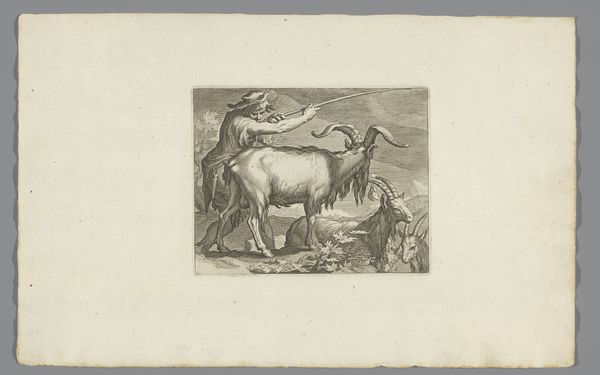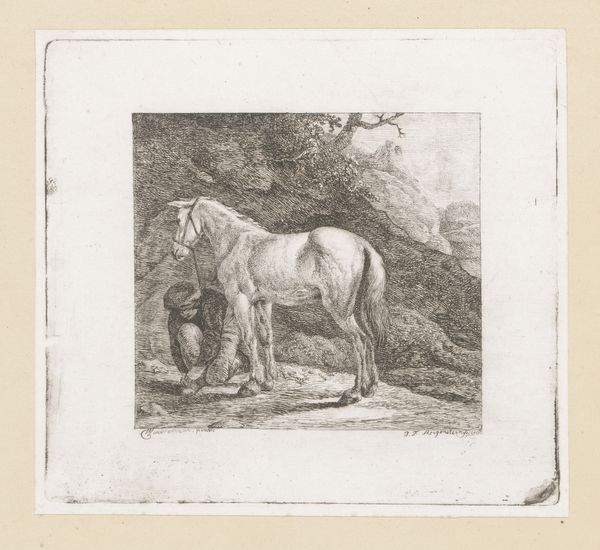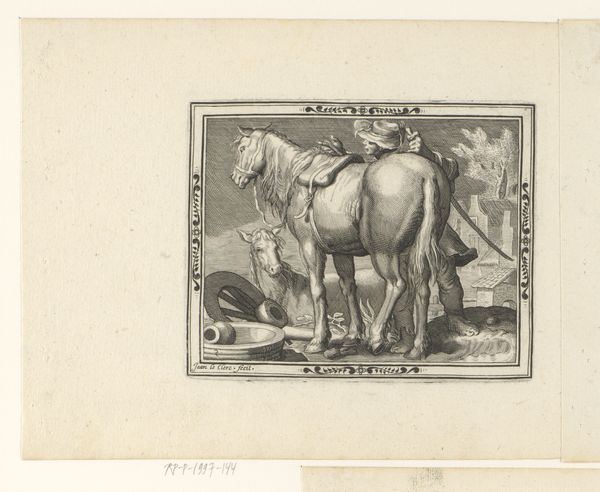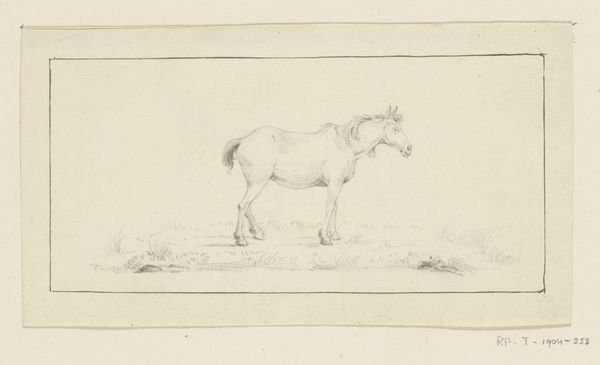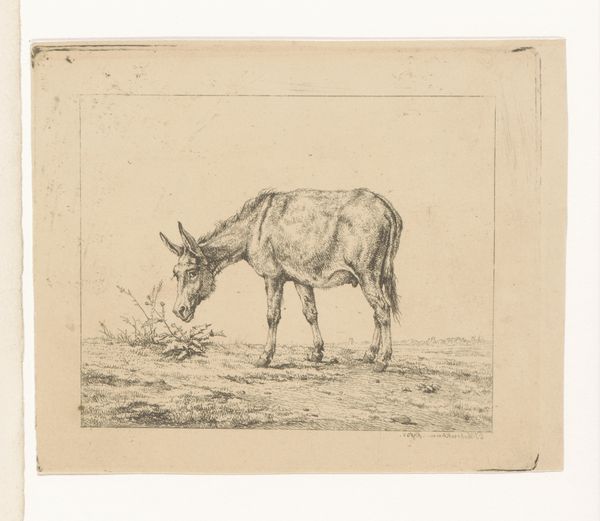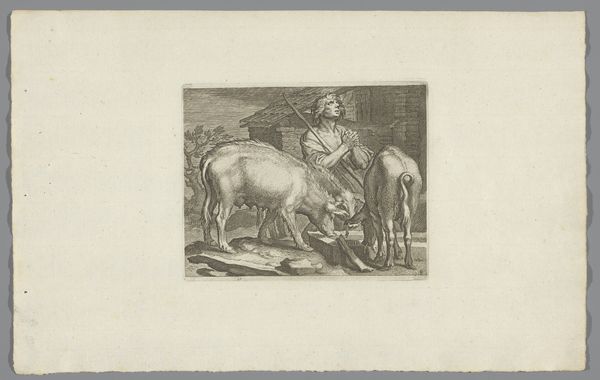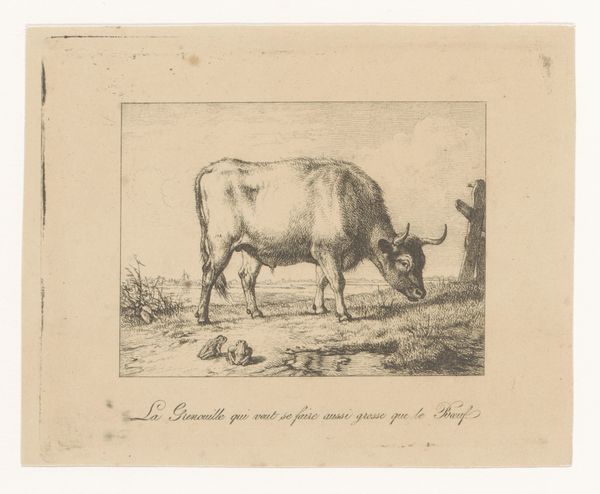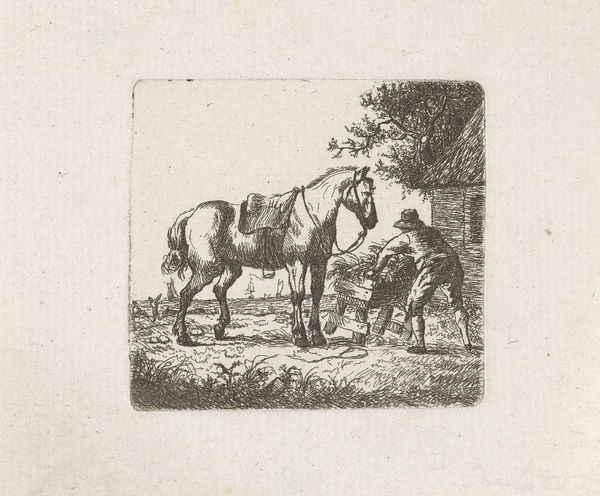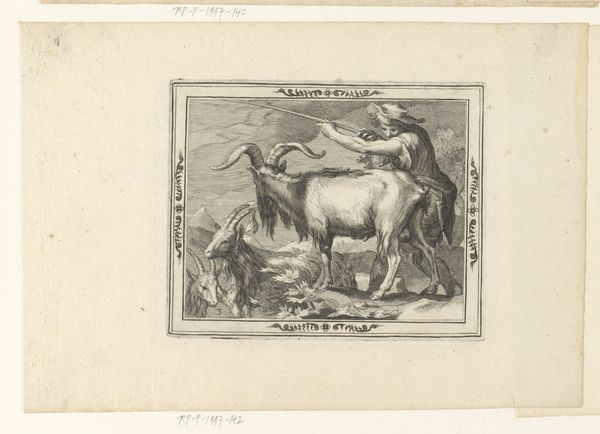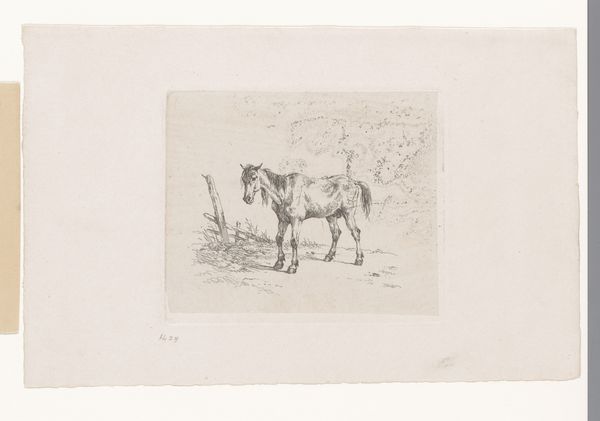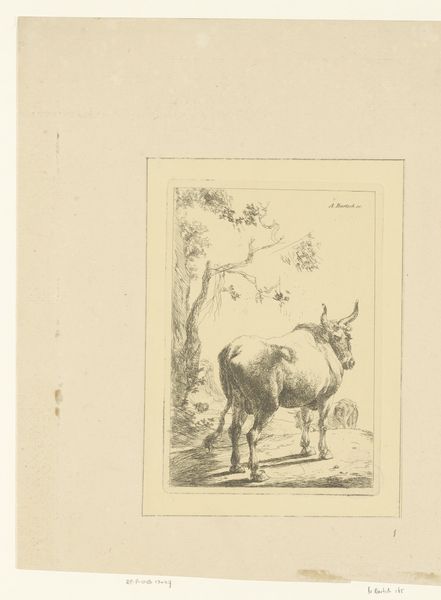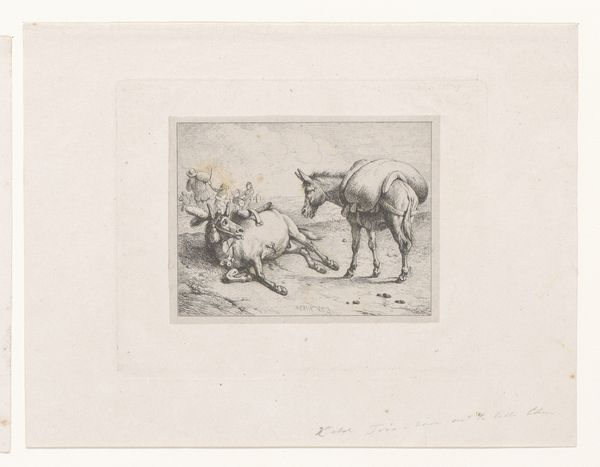
print, engraving
#
baroque
# print
#
landscape
#
figuration
#
genre-painting
#
engraving
Dimensions: height 109 mm, width 140 mm
Copyright: Rijks Museum: Open Domain
Editor: This is "Paarden," or "Horses," an engraving by Boëtius Adamsz. Bolswert, likely created sometime between 1611 and 1732. The muted tones give it a humble feel, focusing on everyday life rather than anything grand. I'm drawn to the horse; there's something weary, yet dignified in its stance. What stands out to you about this print? Curator: The recurring presence of horses in art throughout history reflects our long relationship with them, symbolizing labor, status, and freedom. Look closely at this engraving; the horse is juxtaposed with objects of daily life – a jug, a trough. These suggest sustenance and care, grounding the animal in the reality of its service. Editor: I hadn't considered that interplay. So, it's not just about the horse itself, but what it represents within that domestic setting? Curator: Exactly. In that time, the horse was an extension of human effort and social status. The presence of the weary horse mirrors, perhaps, a reflection of the human condition. Think about how animals are used as symbols. Even the way the horse lowers its head suggests burden. What does that convey to you? Editor: I see a sort of shared fatigue, maybe even a silent understanding, between the animal and its owner, though unseen. It’s really fascinating how many layers there are. It encourages you to consider it from several angles. Curator: Yes. It prompts consideration of man and nature, dependence and duty. A single image is packed with resonant imagery. Editor: I'll definitely look closer at everyday objects and their historical and symbolic weight from now on. Curator: Indeed, there are symbols everywhere.
Comments
No comments
Be the first to comment and join the conversation on the ultimate creative platform.
